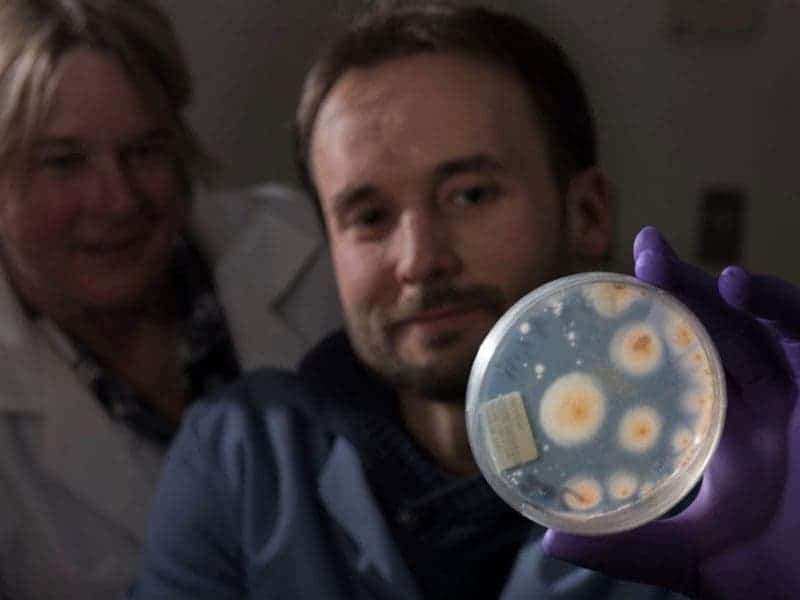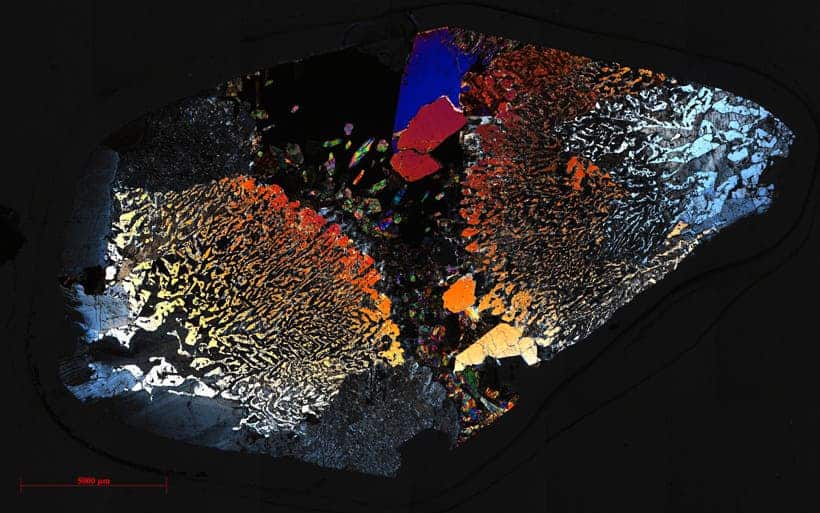
Scientists have found evidence of active microbial communities living in the oceanic crust hundreds of meters beneath the seafloor, proving that life can find a way under even the most extreme and remote conditions.
Rock cores drilled from an undersea mountain in the Indian Ocean revealed that bacteria, fungi, and single-celled organisms called archaea live in cracks and fissures in the dense rock of the ocean’s lower crust. The scientists discovered that the rock samples contained biosignatures of life, including DNA and lipid biomarkers, and messenger RNA extractions showed that some of the cells were actively dividing.
Beneath the soft sediments of the seafloor sit layers of basaltic and gabbro rocks that make up the oceanic crust. Scientists know that life exists in seafloor sediments, but only one previous study in the Atlantic Ocean probed the oceanic crust for signs of life. In the latest research, scientists recovered rock from 750 meters into the lower crust and performed a host of laboratory tests in search of microbial activity.
Beneath the soft sediments of the seafloor sit layers of basaltic and gabbro rocks that make up the oceanic crust. Scientists know that life exists in seafloor sediments, but only one previous study in the Atlantic Ocean probed the oceanic crust for signs of life. In the latest research, scientists recovered rock from 750 meters into the lower crust and performed a host of laboratory tests in search of microbial activity.
“These [communities] can basically be hanging out for millions of years in a very quiescent state,” study author and associate scientist Virginia Edgcomb, from Woods Hole Oceanographic Institution, said. “I’m sure even the active microbes are carrying on at a very slow rate relative to those near the surface, but nevertheless, they’re buzzing along.”
The latest research, published today in the journal Nature, suggests that survival in the deep biosphere depends on underground fluid flow. As seawater entrains deep in the crust, it travels through cracks in the rock, some microfine and others as large as, or even larger, than spaghetti noodles. The fluid likely carries organic matter from the ocean, said Edgcomb, and the team found signs of life clustered around these nutrient highways.

Many of the microorganisms match those observed in other extreme environments, like hydrothermal vents, said Edgcomb. But unlike what Edgcomb expected, the underground life relied on both fixing chemicals for energy and co-opting organic matter floating in the fluid. Messenger RNA analysis revealed that the microbes can recycle amino acids or lipids of dead (or even living) matter. Steven D’Hondt, a professor at the University of Rhode Island who was not involved with the research, said this “runs counter to standard assumptions about subseafloor crustal life.”
“The readiness of that community to consume organic matter suggests that it is metabolically linked to the broader world (e.g., the ocean) via ocean circulation,” D’Hondt said.
It’s unclear whether these results can apply to other areas of the ocean’s lower crust. The research team extracted cores from the undersea mountain Atlantis Bank where the lower crust is exposed at the ocean bottom, which is unusual—normally, thousands of meters of sediment would cover it. The site gave the research team unprecedented access to the lower crust, but future research must confirm whether life is possible with upper crust and bottom sediments still intact.
The latest study shows that “life finds a way,” said Jennifer Biddle, an associate professor at the University of Delaware who did not take part in the study. Earth’s lower oceanic crust could be an analogue to how life might survive on other planets, Biddle added.
Edgcomb cautions that the biomass in the study was extremely low: The cells are just “barely eking out a living,” she said. Still, “the lower ocean crust is one of the last frontiers of the exploration for life on Earth,” Edgcomb said. “We have a better understanding that the lower crust does indeed host viable and, in some cases, active microbial cells.”
—Jenessa Duncombe (@jrdscience), Staff Writer
This article was originally published on Eos Magazine and was republished under a CC BY-NC-ND 3.0 license.


